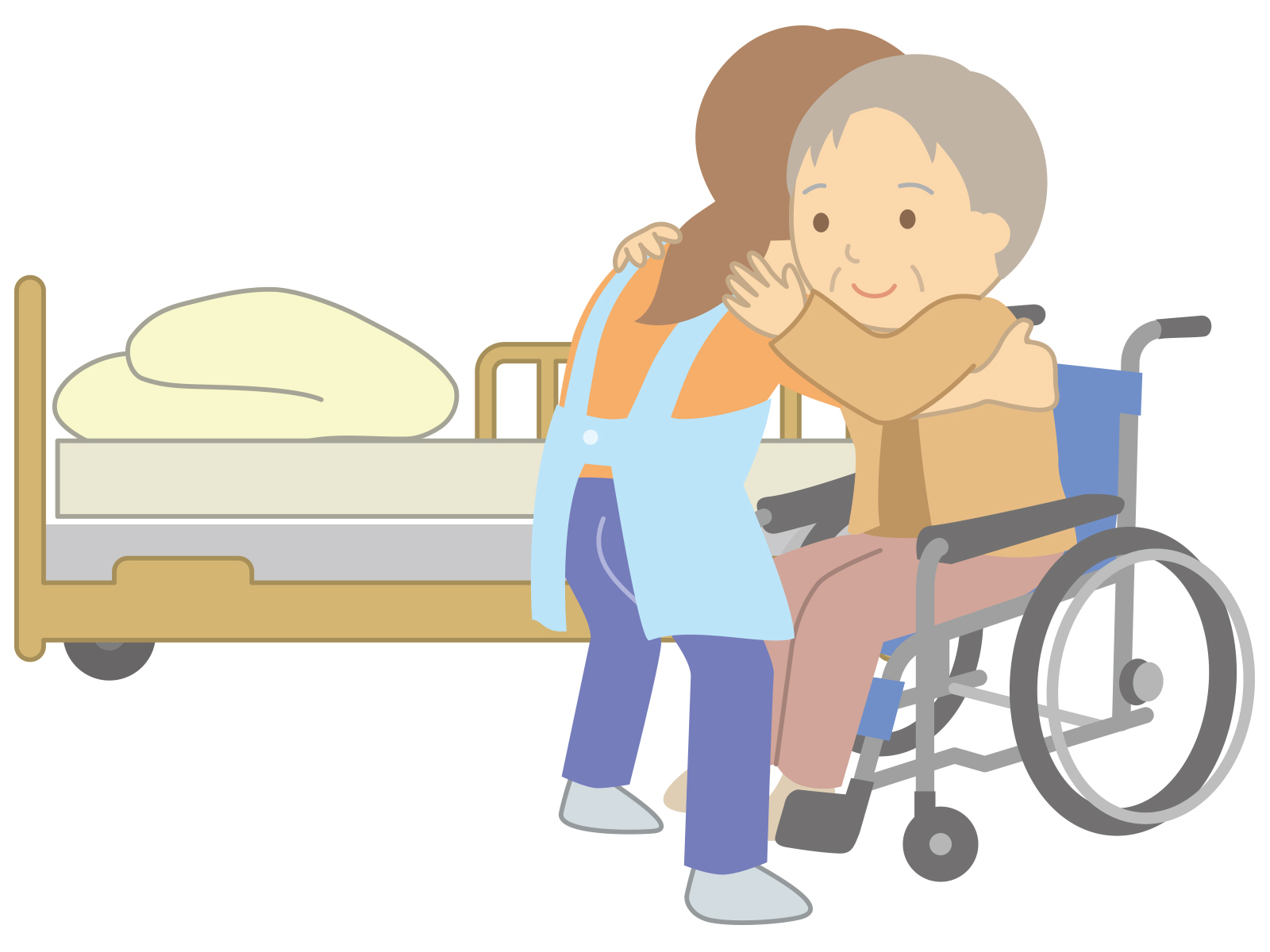第31回介護福祉士国家試験問題より
問題41
選択肢1から5の順で、ベッドから車いすへの全介助で移乗するときの、利用者の動作と、介護福祉職の身体の使い方の組み合わせとして、最も適切なものを1つ選びなさい。
1 上半身を起こすーーー手首で持ち上げる
2 ベッドの端に座るーーーかかとを浮かせて、低くかがむ
3 立ち上がるーーー前腕で真上に引き上げる
4 車いすに移るーーー重心を安定させて、車いすへ足先と身体を向ける
5 深く座りなおすーーー座りなおす方向に向けて、上下の重心移動をする
正解は↓

答え 4
ベッドから車いすへ全介助で移乗するときの利用者の動作と介護福祉職の身体の使い方に関する設問です。
1 × 上半身w起こす際も、ボディメカニクスを活用し、負担がかからないように身体を使うことが介護福祉職には求められます。具体的には、手首や上肢だけの力で持ち上げるのではなく、腹筋や大腿四頭筋等、大きな筋群も活用するようにします。
2 × 利用者がベッドの端に座る端坐位になる際、介護福祉職は安定した姿勢で利用者をしっかりと支える必要があります。そのため介護福祉職は、足底を床につけ、足を肩幅に開き、腰を落とす等、支持基底面を広くとるとともに、自らの重心を低くする必要があります。
3 × 利用者が立ち上がる際、前腕で真上に引き上げると介護福祉職だけでなく、利用者にも負担をかけてしまいます。自然な立ち上がりを意識し、利米須屋が前傾姿勢を取りながら立ち上がれるように支援する必要があります。
4 〇 利用者を車いすに移乗する際、上下の重心移動ではなく、身体を左右に振りながら、後方に重心移動する必要があります。身体と足先を移動方向に向けることで力が伝わりやすく、身体をねじらずにすみ、腰痛予防にもつながります。
5 × 利用者が深く座りなおす際は、上下の重心移動ではなく、身体を左右に振りながら、後方にに重心移動する必要があります。例えば、身体を右側に傾けて左臀部を車いすのシートから浮かせ、身体の左側を後方に重心移動させ、次に身体を左側に傾けて右臀部を車いすのシートから浮かせ、今度は身体の右側を後方に重心移動させるというような方法で深く座りなおしていきます。
英訳
Problem 41
In the order of options 1 to 5, select the most appropriate combination of the user’s movements and how to use the body of a certified care worker when transferring from bed to wheelchair with full assistance.
1 Raise your upper body — Lift with your wrist
2 Sit on the edge of the bed — Float your heels and bend low
3 Stand up — Pull it straight up with your forearm
4 Move to a wheelchair — Stabilize the center of gravity and turn your feet and body toward the wheelchair
5 Sit deeply — Move the center of gravity up and down toward the direction of re-sitting
The correct answer is ↓

Answer 4
This is a question about the user’s movements when transferring from a bed to a wheelchair with full assistance and how to use the body of a certified care worker.
1 × Upper body w Even when waking up, long-term care and welfare workers are required to utilize body mechanics and use their bodies so as not to put a burden on them. Specifically, instead of lifting with the force of the wrists and upper limbs alone, try to utilize large muscle groups such as the abdominal muscles and quadriceps muscles.
2 × When the user sits on the edge of the bed, the long-term care welfare worker needs to firmly support the user in a stable posture. Therefore, long-term care and welfare workers need to have a wide support base and lower their center of gravity by putting the soles on the floor, opening the feet to the shoulder width, and lowering the hips.
3 × When the user stands up, pulling it straight up with his forearm will put a burden not only on the long-term care welfare staff but also on the user. It is necessary to be aware of the natural rise and support Komesu-ya to stand up while taking a forward leaning posture.
4 〇 When transferring a user to a wheelchair, it is necessary to move the center of gravity backward while swinging the body left and right instead of moving the center of gravity up and down. By turning your body and toes in the direction of movement, you can easily transmit power, avoid twisting your body, and prevent back pain.
5 × When the user sits back deeply, it is necessary to move the center of gravity backward while swinging the body left and right instead of moving the center of gravity up and down. For example, tilt your body to the right to lift your left buttock from the wheelchair seat, move the left side of your body backwards to the center of gravity, then tilt your body to the left to lift your right buttock from the wheelchair seat, and this time the right side of your body. Sit back deeply by moving the center of gravity backwards.








コメント